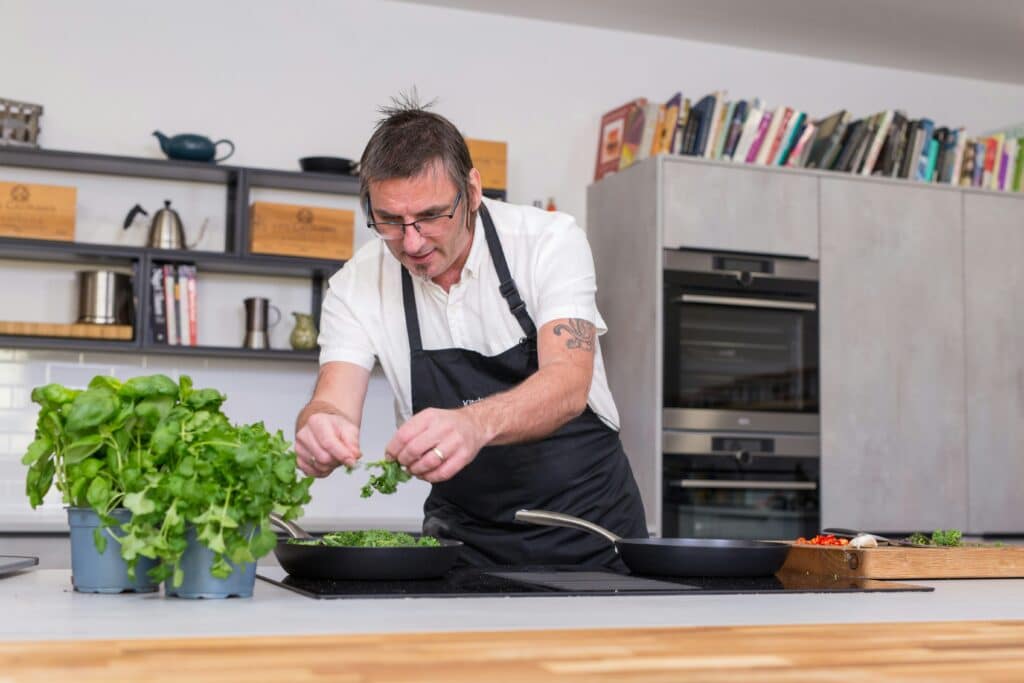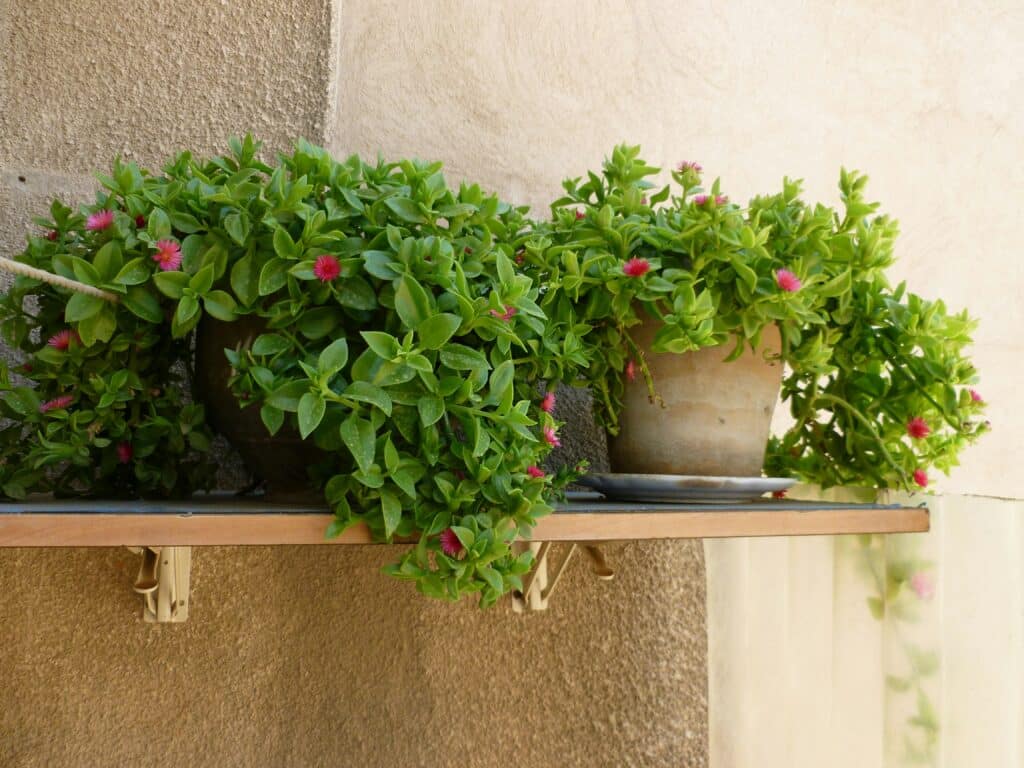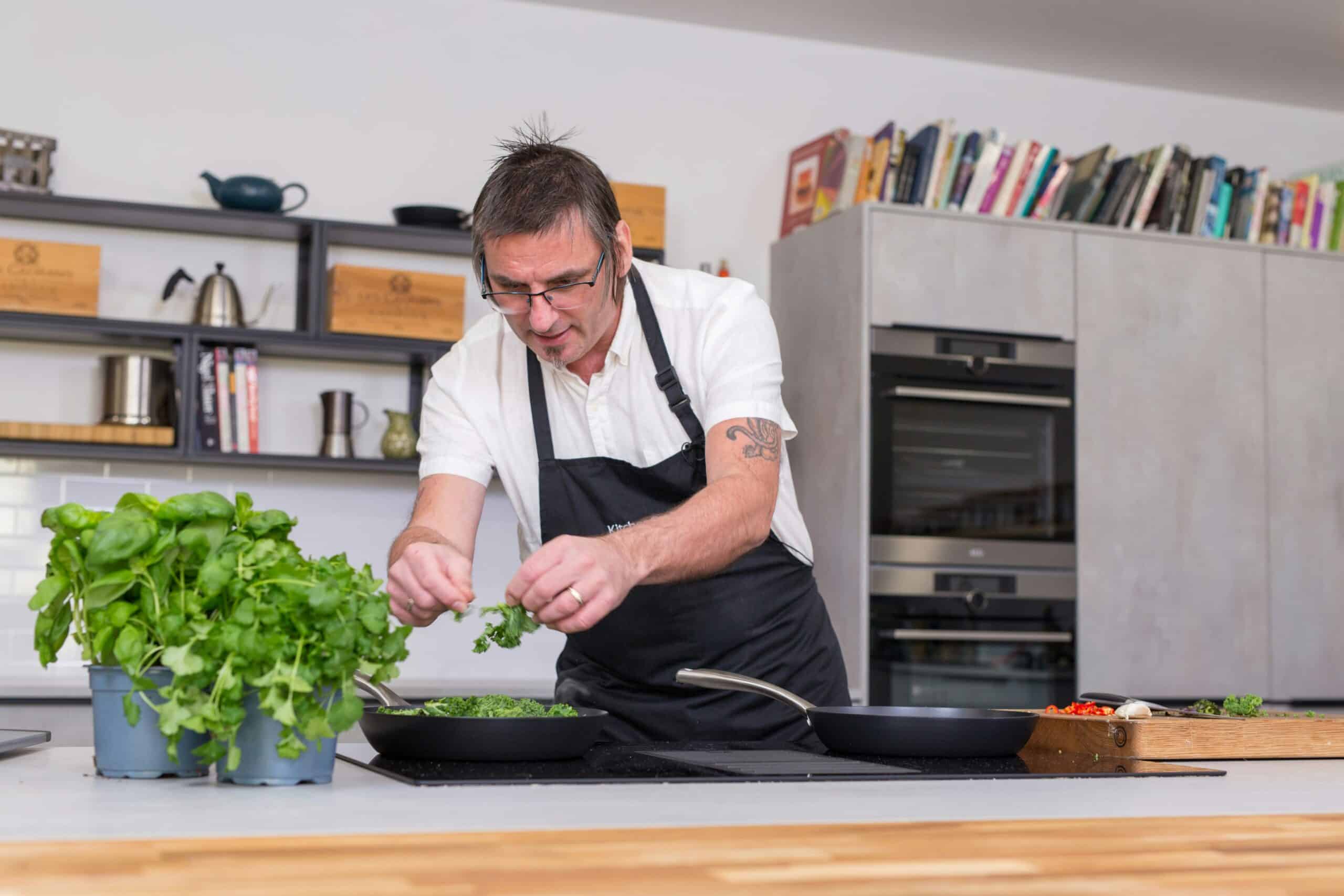Anúncios
It’s not just about the freshness and burst of flavors; it’s about the joy and satisfaction derived from growing your own little garden. This is what “Balcony Bounty: A Beginner’s Guide to Growing Herbs and Elevating Your Cooking Game” promises to unfold.
Let’s demystify the common perception that you need a sprawling backyard to start your green journey. Instead, you’ll see how your balcony, irrespective of its size, can become a lush, green oasis offering an array of herbs that can take your cooking to new heights. From basil to thyme, rosemary to oregano, we’ll explore the world of herbs that are easy to grow, easy to maintain, and phenomenal in taste.
Anúncios

A deeper dive into this guide will provide valuable insights into the art of balcony gardening. We will guide you through the selection of pots, understanding your balcony’s light exposure, choosing the right soil, and the specific care each herb needs. As a bonus, we will also share some unique, simple, and flavorful recipes that highlight the herbs you’ve nurtured.
Get ready to embark on a green thumb journey with us. With a little patience and care, your balcony garden will not just be a therapeutic escape, but also a provider of the freshest ingredients to your kitchen. So, brace yourself to elevate your cooking game with the freshness and flavor of home-grown herbs.
Anúncios
Choosing the Right Herbs for Your Balcony
Selecting the suitable herbs for your balcony garden is one of the primary decisions you need to make. Your choice will largely depend on your cooking habits, the climate of your area, and the amount of sunlight your balcony receives. Some herbs, such as basil, parsley, and rosemary, are renowned for their versatility in cooking and can easily be grown in containers.
Considering your Culinary Preferences
Your herb selection should ideally align with your culinary preferences. If you frequently cook Italian dishes, you may want to consider growing basil, oregano, and rosemary. Similarly, if you have a preference for Asian cuisine, herbs like lemongrass, cilantro, and Thai basil would be more appropriate. Remember, the idea behind growing your own herbs is to enhance your cooking experience, so choose herbs that align with your culinary style.
Factoring in the Climatic Conditions
The climate of your area significantly influences the herbs you can successfully grow. For example, herbs like basil and parsley thrive in warm climates, while others such as dill and cilantro prefer cooler conditions.
Setting Up Your Balcony Garden
Setting up your balcony garden requires careful planning to ensure that your herbs get the right amount of sunlight, are watered appropriately, and are protected from pests and diseases.
Arranging Your Pots and Containers
Herbs can be grown in individual pots or larger containers. Consider the size of your balcony and the amount of space each herb will need to grow. For smaller balconies, vertical gardens or tiered plant stands can be an effective way to maximize space.
Watering and Sunlight Considerations
Most herbs need at least six hours of sunlight each day, so position your pots and containers accordingly. Remember, overwatering is often more damaging than underwatering, so ensure your pots and containers have sufficient drainage.
Maintaining Your Balcony Herb Garden
Once you’ve set up your balcony herb garden, regular maintenance is essential to ensure healthy growth and abundant yields.

Regular Pruning
Regular pruning encourages bushier growth and prevents your herbs from becoming leggy. It also stimulates the production of new leaves, which are often more flavorful.
Pest Control
Herbs are relatively hardy, but they can still be affected by pests. Regular inspection of your plants for signs of damage, and the application of natural pest control methods when necessary, can help keep your herbs healthy.
Best Practices for Harvesting
While the morning is ideal for harvesting herbs due to the peak concentration of essential oils, there are a few additional best practices that can maximize the flavor and yield of your plants. Use clean, sharp scissors or garden shears to avoid damaging the plant. Make precise cuts just above a leaf node, as this encourages new growth and keeps the plant looking neat and healthy. Never harvest more than one-third of a plant at a time—this ensures the herb can recover and continue producing.
Pay attention to the growth stage of each herb. For example, basil tends to get bitter once it flowers, so pinch off the flower buds early and harvest frequently to keep the plant producing tender leaves. With herbs like mint and oregano, harvesting just before flowering will give you the most flavorful leaves. For perennial herbs such as rosemary and thyme, regular light pruning is more effective than infrequent heavy cutting.
Extending the Harvest Season
To keep your herb supply abundant, consider succession planting or staggering the growth of certain annual herbs like cilantro and dill, which tend to bolt quickly in hot weather. By planting a new round every couple of weeks, you can enjoy a more consistent harvest throughout the season. For perennial herbs, routine pruning and feeding can help extend their productivity year-round, especially if your climate supports mild winters.
In colder regions, you can bring smaller pots indoors before the first frost. Place them near a sunny window or under grow lights to continue harvesting herbs like parsley, chives, and basil even in winter. Be sure to adjust watering habits indoors, as lower light levels and dry indoor air can affect the moisture needs of your plants.
Storing Fresh Herbs
Once harvested, storing fresh herbs properly can help preserve their flavor and texture. For soft herbs like cilantro, parsley, and basil, trim the stems and place them in a glass of water like a bouquet. Cover them loosely with a plastic bag and store them in the refrigerator, changing the water every couple of days. This method can keep them fresh for up to a week.
Harder herbs like rosemary, thyme, and sage can be wrapped in a damp paper towel, placed in a resealable plastic bag, and stored in the crisper drawer of your refrigerator. Labeling the bags with the date helps you track freshness and use them in time.
Advanced Drying Techniques
While air drying is the most traditional method, there are several modern techniques that can speed up the drying process and preserve more of the herbs’ essential oils. Dehydrators, for instance, offer a fast and effective way to dry herbs evenly. Set your dehydrator to a low temperature (95–115°F or 35–46°C) to preserve maximum flavor.
Another option is to use your oven. Spread the herbs in a single layer on a baking sheet and set your oven to the lowest temperature, ideally below 180°F (82°C). Leave the door slightly open to allow moisture to escape, and check the herbs every 15–20 minutes until they are dry and brittle.
Microwave drying can also be used in small batches. Place herbs between two paper towels and microwave them on high for 30 seconds at a time, checking frequently to avoid over-drying or burning. This method works well for small, quick jobs but may not retain flavor as well as slower techniques.
Freezing Herbs for Long-Term Use
Freezing is a convenient and efficient way to store herbs while retaining much of their flavor and color. Wash and dry the herbs thoroughly, then chop them and place them in ice cube trays. Cover them with water or olive oil, then freeze. Once solid, transfer the cubes to labeled freezer bags. These herb cubes can be tossed directly into soups, stews, or sauces for instant flavor.
Alternatively, freeze whole sprigs on a baking sheet and then store them in a freezer-safe container. This works particularly well for hardy herbs like rosemary and thyme.
Infusing Oils and Vinegars
Infusing oils and vinegars with your homegrown herbs is an excellent way to preserve and showcase their flavors. For herb-infused oil, combine washed and dried herbs such as basil, rosemary, or garlic chives with a neutral oil like olive or grapeseed. Store in a clean glass bottle and keep refrigerated, using within two weeks to ensure safety and freshness.
For vinegar infusions, apple cider or white wine vinegar works well as a base. Place herbs like tarragon, dill, or thyme in a sterilized bottle, fill with vinegar, and let it steep for a few weeks in a cool, dark place. Shake occasionally, and strain the vinegar once it has reached the desired strength. These flavored vinegars make delightful additions to salad dressings, marinades, or homemade gifts.
Creating Herb Blends and Seasoning Mixes
Dried herbs can be combined to create unique seasoning blends tailored to your personal taste. Classic combinations include Italian seasoning (oregano, basil, thyme, rosemary), herbes de Provence (lavender, marjoram, rosemary, thyme), or za’atar (oregano, sumac, sesame seeds, thyme). Crush the dried herbs with a mortar and pestle or spice grinder for a finer texture and more uniform blend.
Store your mixes in small glass jars or spice containers, labeling them with the blend name and date. These homemade herb blends can be used in pasta dishes, roasted vegetables, meat rubs, or as table seasonings.
Culinary Applications Beyond Cooking
Herbs are incredibly versatile and can elevate dishes in more ways than just flavor. Finely chopped herbs can be mixed into compound butters, ideal for spreading on warm bread or melting over grilled meats and vegetables. Combine softened butter with herbs like parsley, chives, and tarragon, then roll into a log and chill.
Fresh or dried herbs can also enhance beverages. Mint and basil are popular additions to summer drinks like lemonade, iced tea, and cocktails. Steep herbs in hot water to make herbal teas—lemon balm, chamomile, and peppermint are especially soothing and aromatic.
Herb-infused simple syrups are another creative way to incorporate herbal flavor into drinks or desserts. To make, combine equal parts sugar and water, heat until dissolved, and add herbs. Let steep, strain, and refrigerate. Use these syrups in cocktails, mocktails, or as toppings for cakes and fruit.
Crafting with Herbs
Beyond the kitchen, herbs offer numerous opportunities for home crafting. You can create fragrant sachets by drying lavender, mint, or lemon verbena and sealing them in small cloth bags. These make wonderful drawer fresheners or gifts. Herb wreaths, made by bundling and shaping herbs into a circle, can add a rustic charm and fresh aroma to your home décor.
Homemade bath products are another way to use herbs creatively. Infuse bath salts or oils with herbs like rosemary and eucalyptus for a spa-like experience. Create your own herb-based scrubs by mixing dried herbs with sugar and carrier oils for exfoliating treatments.
Keeping a Herb Journal
To track your progress and successes, consider keeping a gardening journal specifically for your herbs. Record planting dates, germination times, light and watering needs, pest problems, and harvesting notes. You can also jot down flavor observations, recipe ideas, and any useful tips you discover along the way. Over time, this log can become a valuable resource for planning future plantings and refining your gardening techniques.
Sharing Your Herb Bounty
Growing more than you can use? Share your harvest with friends, neighbors, or local food banks. Small bundles of fresh herbs wrapped in twine or paper make charming and thoughtful gifts. You could also host a “herb swap” with fellow gardeners to trade different varieties, expanding your collection and knowledge.
If you enjoy writing or content creation, consider starting a blog or social media page to document your balcony herb garden journey. Share tips, photos, and recipes—it’s a great way to connect with a like-minded community and inspire others to try herb gardening themselves.
Conclusion
Growing your own herbs can be a rewarding and enjoyable experience. It not only adds a touch of green to your balcony but also elevates your cooking game by providing you with a constant supply of fresh, flavorful herbs. With the right selection of herbs, a well-planned setup, and regular maintenance, your balcony can indeed become a bounty of herbs. Happy gardening!
In conclusion, the “Balcony Bounty: A Beginner’s Guide to Growing Herbs and Elevating Your Cooking Game” offers valuable insights to anyone who wants to step up their culinary game by growing their herbs. Cultivating your herbs, especially on your balcony, is not only a sustainable and eco-friendly choice, but it also enriches your dishes’ flavor profiles, resulting in delicious home-cooked meals that are hard to replicate.
Having access to fresh herbs all year round will undoubtedly be a game-changer, infusing a new zest and zeal into your cooking routine. This guide provides you with all the necessary tips and tricks, from understanding the different types of herbs and their growth cycles to the right way of harvesting and storing them.
What’s more, growing herbs at home is an enjoyable and therapeutic process that can significantly boost your mental well-being. As we’ve learned, creating a bountiful balcony herb garden doesn’t require a lot of space, making it an ideal pursuit for those living in apartments or condos.
In essence, by taking up balcony herb gardening, you’re not only enhancing your cooking skills but also promoting a healthier, greener lifestyle. Happy gardening, and bon appétit!

